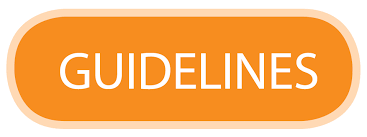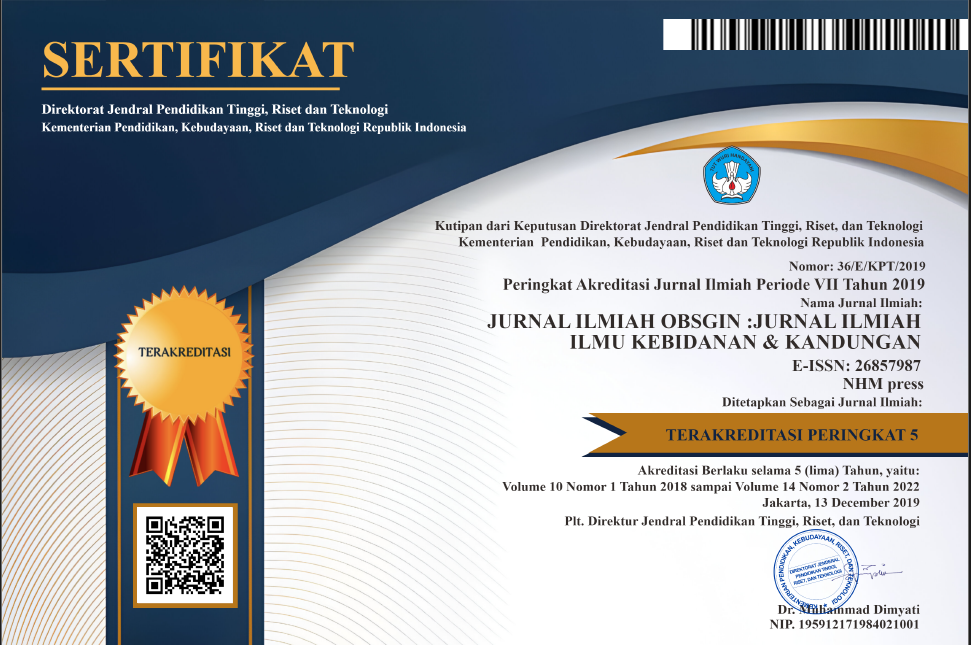Efektivitas Pijat Bayi Menggunakan Minyak Kelapa Murni (Virgin Coconut Oil) Terhadap Peningkatan Berat Badan Bayi 1-6 Bulan Di Desa Jenggrong Ranuyoso Lumajang
Abstract
Weight gain is one indicator of infant health that can be used as a measure of infant growth. One of the recommended weight stimulations is baby massage. Baby massage, also known as tactile stimulation, is an art of healthcare and medicine that has been practiced for centuries. Infant massage, among others, can stimulate the digestion of the hormone’s insulin and gasoline, so that food absorption is better. This study aims to determine the effectiveness of baby massage using virgin coconut oil on increasing infant weight for 1-6 months. This study was a pre-experimental design type one group pretest-posttest. The population in this study was infants 1-6 months in the village of Jenggrong Ranuyoso Lumajang involving as many as 40 participants. The sampling technique used is purposive sampling. Data was collected using a data collection sheet. Data were analyzed using Predictive Analytics SoftWare Version 18 with paired sample t-test at the significance level of <0.05. The results showed that the average body weight of children before baby massage was 5174.5 grams (SD ± 1097.6) and the average weight of children after baby massage was 5242.5 grams (SD ± 1077.3). Statistical analysis showed that there was a significant difference in baby weight 1-6 months before and after baby massage using virgin coconut oil (p-value: 0.000) Infant massage is a reasonably simple intervention that effectively raises the baby's weight and benefits both the baby and the parents. To foster parent-child interaction and involve parents in their child's care, specially trained midwives can teach parents how to massage their infants.
References
Anggarini. (2019). The Effect of Infant Massage on Infant Weight Gain. Advances in Health Sciences Research, 27(1).
Anggarini, & Andriani. (2019). The Effect of Infant Massage on Infant Weight Gain. Advances in Health Sciences Research, 27(1).
Anil. (2020). Low birth weight and its associated risk factors: Health facility-based case-control study. Plos One Journal, 15(6).
Anna. (2017). Review of randomized controlled trials of massage in preterm infants. MDPI Journal, 4(21).
Badan Pusat Statistik. (2020). Profil Statistik Kesehatan 2019. Badan Pusat Statistik.
Cowen, & Bindler. (2018). Principles of Pediatric Nursing Caring for Children. Webcrafters Inc.
Damayanti, D., Pritasari, & Tri, N. (2017). Gizi Dalam Daur Kehidupan (1st ed.). Pusat Pendidikan Sumber Daya Manusia Kesehatan Kementerian Kesehatan RI.
Davidson, M., London, M., & Ladewig, P. (2012). Maternal Newborn Nursing & Woman’s Health. Pearson Education, Inc.
Deutekom. (2017). he Association of Birth Weight and Infant Growth with Energy Balance-Related Behavior – A Systematic Review and Best-Evidence Synthesis of Human Studies. Plos One Journal, 12(1).
Fatmawati. (2021). The Effect of Baby Massage on Improvement. Journal for Quality in Public Health, 4(2).
Fauziah. (2018). Effect Of Baby Massage To Increase Weight And Baby Sleep Quality At Jetis Public Health Center Yogyakarta. Jurnal Ilmiah Kesehatan Dan Aplikasinya, 6(2).
Flaherman, & McKean. (2018). Higher Birth Weight Improves Rates of Exclusive Breastfeeding Through 3 Months. Childhood Obesity and Nutrition, 11(12).
Johari, & Haghgou. (2016). The Effect of Massage on Weight Gain of Low-Weight Hospitalized Infants: A Randomized Clinical Trial. Physical Therapy Research Physical Treatments, 5(4).
Kyle, & Carman. (2018). Essential of Pediatric Nursing. Wolters Kluwer.
Lestari. (2021). The effectiveness of baby massage in increasing an infant's body weight. Journal of Public Health Research, 31(10).
Lewis, L. (2018). Fundamentals of Midwifery. Wiley Blackwell.
Manego. (2021). Birth weight, growth, nutritional status and mortality of infants from Lambaréné and Fougamou in Gabon in their first year of life. Plos One Journal, 16(2).
Marcdante, & Kliegman. (2019). Nelson Essentials of Pediatrics. Elsevier, Ltd.
Marni. (2019). The Effect Of Baby Massage On Increasing Weight In Babies. Jurnal Kebidanan Indonesia, 10(1).
Murray, S. S., & McKinney, E. S. (2019). Foundations of maternal-newborn and women’s health nursing. Elsevier, Ltd.
Porreca. (2016). Infant Massage and Quality of Early Mother–Infant Interactions: Are There Associations with Maternal Psychological Wellbeing, Marital Quality, and Social Support? Frontiers in Psychology, 7(2049).
Sanghvi. (2014). Predictors for Weight Gain in Children Treated for Severe Acute Malnutrition: A Prospective Study at Nutritional Rehabilitation Center. International Scholarity Research Notices, 808756.
Soetardjo, S., & Soekatri, M. (2011). Gizi Seimbang Dalam Daur Kehidupan (S. Almatsier (ed.); 1st ed.). PT. Gramedia Pustaka Utama.
Taveras. (2019). Weight Status in the First 6 Months of Life and Obesity at 3 Years of Age. NIH Public Access, 123(4).
Tiffany. (2019). Pediatric Massage Therapy Research. MDPI Journal, 6(78).
Wang. (2018). Relationship between socioeconomic status and weight gain during infancy: The BeeBOFT study. Plos One Journal, 13(11).












